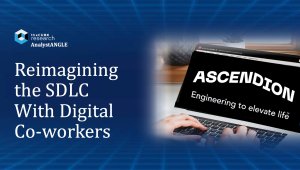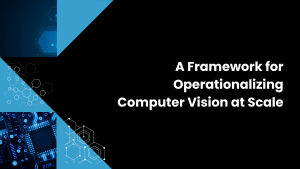PREMISE:
One of the biggest mistakes that IT organizations make is looking at “the cloud” as a destination instead of an operational model. By considering the cloud to be yet another data center, it’s highly likely that any “cloud” application deployments will bring along legacy data operational models as well. In this research note, Wikibon looks at an alternative approach to the key considerations for moving to the cloud.
Simplifying the Context – Customer and Community vs. Internally Focused
More than any other question, Wikibon’s community asks, “What applications should we move to the cloud?“. Far too often, the expected answer is a list of applications to “lift and shift” from an existing data center into a public cloud. Wikibon has quantified the challenge of migration for a set of complex business applications. Instead of thinking about “moving to the cloud” as a destination, we suggestion thinking about “moving to the cloud” as an operational change. A change that will allow your business to think more distinctly about the context of how an application will deliver value.
A better way to approach that question is to break it into two parts:
- “What is the context of the application?” – This lets the business focus on whether the application is Customer and Community focused, or if the application is Internally Focused.
- “What outcome or net-new value will this application create?” – This creates a context of whether this action may create a new business opportunity or optimize an existing process.
By asking the original question, too many companies confuse the business goal with the technology options and challenges. By reframing it in the context of Customer/Community vs. Internal Focus, the evaluation criteria can incorporate more than just the IT organization. For example:

While every business has it’s unique attributes, at the core of every business is the tension between the cost of producing a product or service and the capture of revenue through the sale of that product or service. The goal of every IT application should be to improve the business’ ability to maximize the difference between those two opposing cash flow streams, and drive efficiency into any aspect of those processes.
- Normalize the Technology Choices: While there are many technology choices for building or using Cloud Computing, at every IaaS, PaaS and SaaS layer, this framework will assume that all of these technology choices are all considered equal. This allows a clear focus on the business impact of any application decision. [EXAMPLE: Microsoft Sharepoint can be deployed on a Private Cloud or Public Cloud with similar results. Cloudera’s Big Data framework can be deployed on a Private Cloud or Public Cloud with different scaling characteristics.] Understanding how CAPEX vs. OPEX pricing, data-source locations and required scaling patterns will impact how those choices will affect value for the business.
- Differentiate the Business: There are a large number of business applications that were put in place during the 1980s-2000s as a way to reduce costs, automate repetitive tasks, or increase worker productivity. These applications are now commonplace in all businesses. While these applications are still necessary to operate the business, they have become a part of “Undifferentiated Business Process”. [EXAMPLE: Every company needs a CRM system to manage Sales and Customer Interactions. But in 2016, does the CRM system provide any unique business differentiation vs. another company with a similar CRM system? Could the cost difference between an On-Premises CRM and SaaS CRM, over Years 1-8, be better applied to additional Sales and Marketing activities to drive topline revenues?

- Prepare for the Unexpected: As businesses automated repetitive tasks to create business value, this was done in an environment where the competitive landscape was much more stable and understood. As the Internet has expanded into every aspect of business, this has created an environment that moves much faster and presents greater levels of uncertainty. This uncertainty creates “New or Unexpected Market Opportunities”. [EXAMPLE: Retailers such as Target could not have planned for applications such as Pinterest or Instacart in 2010 that would have massive impact on how consumers shop. But prior to integrating those applications into their Target.com web experience, they needed to begin putting together an API framework to allow them to plan for new or unexpected was to engage with their customers.]
Is it Necessary to Keep the Lights On, or Just Optimize the Light Bulbs?
For many years, the focus of IT organizations has been on building and operating highly available systems to streamline and automate business process. But over time, these applications, while still business critical, have become less and less differentiating for the business. Applications in the “undifferentiated” space need to move towards a measurement that is focused less on “availability” and more on “cost reduction”. Those systems move into a “value engineering” stage in their lifecycle. This moves the measurement of success to a mix of automated operations + efficient technology. In the gray area, IT organizations should identify three types of applications or activities:
- Applications that can be moved or migrated to SaaS. Email, Collaboration, CRM, HCM and even IT Operational tools are great candidates for a migration to a SaaS alternative.
- Applications that can benefit from on-premises optimizations around technology or automated operations. Any application that can be virtualized (e.g. via VMware) may be an excellent candidate to run more efficiently with Hyper Converged Infrastructure (HCI) or with an All-Flash Array for storage.
- Considerations for ways to integrate new, undefined applications into the existing application portfolio (e.g. API Gateways, Virtual Private Clouds, etc.).

Business Won’t Survive without Investment in New or Unexpected Opportunities
Technology trade shows and meetups are filled with presentations talking about Netflix, Uber or AirBnB – modern companies that disrupted existing industries by leveraging technology in ways that had never before been considered. Every industry has an “Uber”-like company being created to disrupt the status quo business models of the existing industry leader. But for many companies, the more critical near term challenge is understanding how to build the capabilities needed to adapt to new or unexpected opportunities.

Being prepared for the new or unexpected is not going to happen by just acquiring new technology, especially if that technology will continue to be used in the same ways as technology is used today. The new usage models must be programmatic (using APIs), automated and adaptable to frequent changes and updates. Understanding these requirements makes it easier to understand that “moving to cloud” is not a destination, but rather an evolved operational model.
- New and unexpected opportunities require the ability to move quickly, experiment, and iterate based on learnings. This model is formally known as an Observe, Orient, Decide and Act (OODA) loop.
- The OODA model is often aligned to the DevOps operational model, where application and operations teams understand that a framework needs to be in place to rapidly build, deploy and measure new software deployments.
- The need to move quickly requires companies to measure themselves with customer-driven metrics instead or cost-reduction metrics.
All of these attributes are directly aligned to the capabilities available within the cloud. By thinking of the cloud as an operational model, instead of a destination, IT organizations can begin to focus on the business outcomes instead of the underlying technology.
Rethinking the Metrics of IT to Align to Modern Business Challenges
Traditionally, IT organizations have always been measured by metrics that focused on availability (e.g. 99.999) or reduction in costs from year to year. But as the market becomes more competitive and faster paced, there needs to be an equal focus on metrics that align to New or Unexpected Market Opportunities. These metrics must be focus on elements such as:
- Time to understand a new business opportunity – Measured in ability to experiment with potential technology solutions.
- Time to respond to a new business opportunity – Measured in time to deploy new resources for new applications
- Time to respond to Customer/Community Feedback – Measured in time to deploy patches, updates or new features into an application
- Time to Capitalize in New Customer/Community Trends – Measured in the ability to scale a new idea from incubation to broader market-reach.
Action Item:
In the cloud computing era, one of the key strengths of the best IT organizations will be an ability to adapt to the changing business contexts of Customer/Community and Internally Focused. As the balance shifts between investment areas, IT organizations must be able to apply technology that produces outcomes that are materially relevant to the context of each business opportunity. By applying this simplified framework towards the context of any new or existing applications, IT organizations can begin to think about “What applications should we move to the cloud?” in a way that will enable them to focus more on the business outcome and less on the underlying technology choices.


